HUMANS OF THE ISLANDS - LUCIDLUCA

Meet Lucidluca, an artist with a vibrant Tongan background! Luca's art reflects his rich cultural experiences. In our chat, Luca shares insights into his journey, the significance of cultural representation, and the inspiration behind his unique avatar maker.
-
Malo lava Luca! Tell us about yourself. Who is Luca, and where did you grow up, etc.
In my household, we call ourselves a fruit salad fam. I’m half Tongan and half Palangi, and I was born in Lautoka, Fiji, to an expat dad from Manurewa and a mum originally from Lotofoa, Ha’apai. I have three older sisters (technically halves, but we never think of it that way).
We all have different mums from different islands: Tonga, Kiribati, Solomon Islands, and Samoa. My dad spent decades as a tradie and a seaplane pilot in the Pacific, delivering midwives to outer islands to help women give birth safely.
However, he ended up collecting a few kiddos himself along the way, finally settling down with my mum in Tonga. She is a family woman through and through, so we have lived as one big cross-culture blended family.
My dad then passed away when I was young, so I was raised entirely by these amazing women in my family. I myself was raised in the hamlet of Mataika right on the lagoon in Nuku’alofa. I went to Ocean of Light International School before moving to Aotearoa for later schooling.
This rich history has really made me who I am today and now stays relevant in my art.
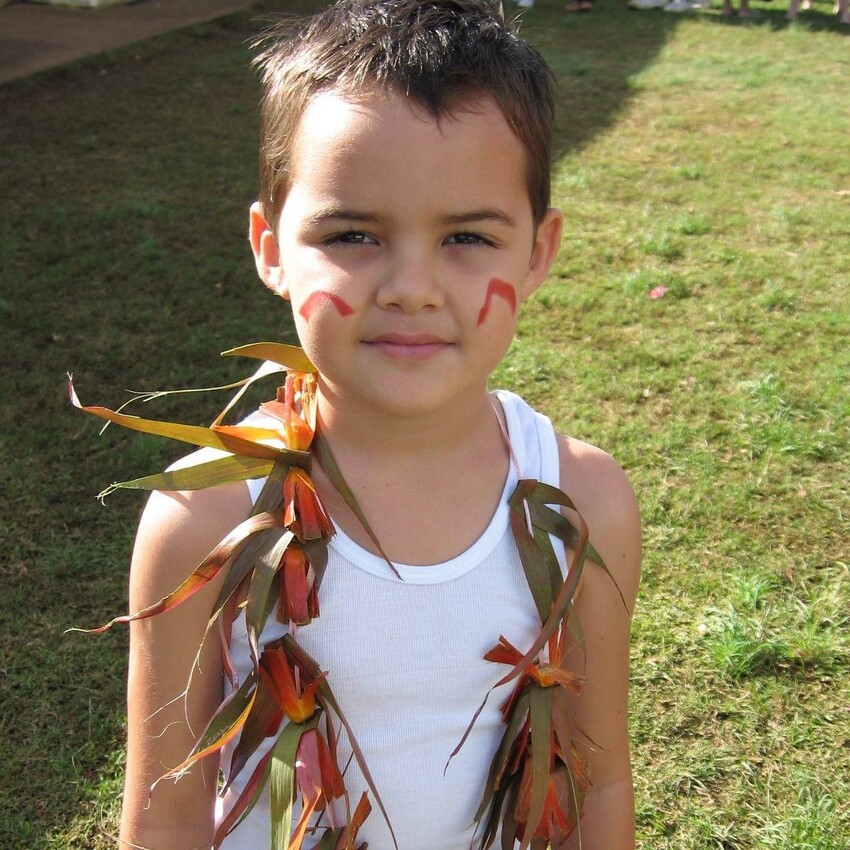
You've spoken about growing up in Tonga, what was that like? When did you leave Tonga?
I am so lucky to have grown up in the motherland. Tonga is such a special place with a unique essence that can’t be found anywhere else. This is true of all the islands; there’s just an island life switch that flips when you get close enough.
Growing up there, I sat on an interesting balance of my dad’s expat community and routine, and also my mum's entire family life. I spent all my time outside of school with my cousins, playing shop with guava leaves as cash, climbing mango trees and selling them roadside, helping my grandad turn the car steering wheel/road-sign pole invention that functioned as our puaka tunu spit, lol!
I still dream of all the fruit and the hyena laughs, the weave of the “kiddie table” plastic mats pressing patterns into the skin of our crossed legs, and the sound of village aunties beating tapa cloth in the afternoon.
I was born in 2000 and left in 2010, visiting yearly for a few years after. So I spent about a decade in Tongatapu and Ha’apai combined. I also spent a fair bit of time in beautiful Apia with my mum, helping support my older sister after she had her first pēpē.
What was your journey into the arts like?
“Ever since you’ve picked up a pencil, kid,” is what my family would tell you. Every single birthday, I got some sort of art supplies. It’s always been fostered because I always enjoyed drawing; it became my thing.
I loved drawing mermaids and giving them as gifts to people (and because I was cute, they’d have to politely put it on their fridge). Now, as an adult, that passion has stuck, and I still get messages from family friends or people I’d met as a kid saying they’ve still got my mermaid drawings!
My journey into the arts has been a slow but linear lifelong love of mine.
In saying that, the imposter syndrome remains strong, and it’s something I’m constantly trying to overcome. I work really hard by my own standards, and that’s enough for me for now.
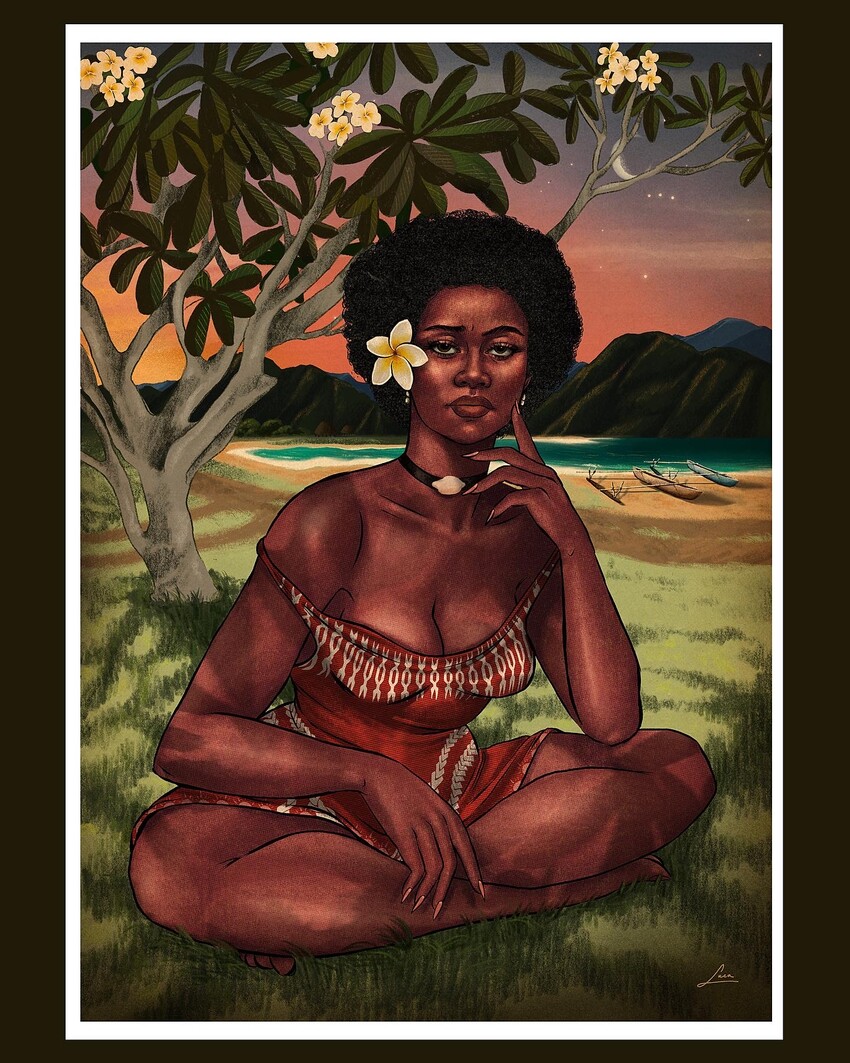
Have you always wanted to become an artist?
I know I did, at least in some capacity, 100%. If it wasn’t straight-up art and illustration, it would’ve been as a director, or a cinematographer, maybe even video game design, creative direction, etc.
I have always had such a strong imagination and have ideas and visuals that come to me in daydreams, so I’ve always needed an outlet to express that. I’m a bit of a jack-of-all-trades, master-of-none type, haha. But drawing will always remain my number one love.
How has your Tongan heritage inspired your art?
For one I cannot stress how much my aunties and my mum are major glam Tongan ladies in all of their glory. Them as my muses, mixed with my background and the imaginations I had as my childhood self, have really influenced the work I make today.
I feel so proud of my Tongan heritage and I really want to do the best I can to make my family back home and my mum proud. It’s my goal to showcase the beauty inspired by my upbringing, and provide a source of representation and empowerment for Pasifika women everywhere.
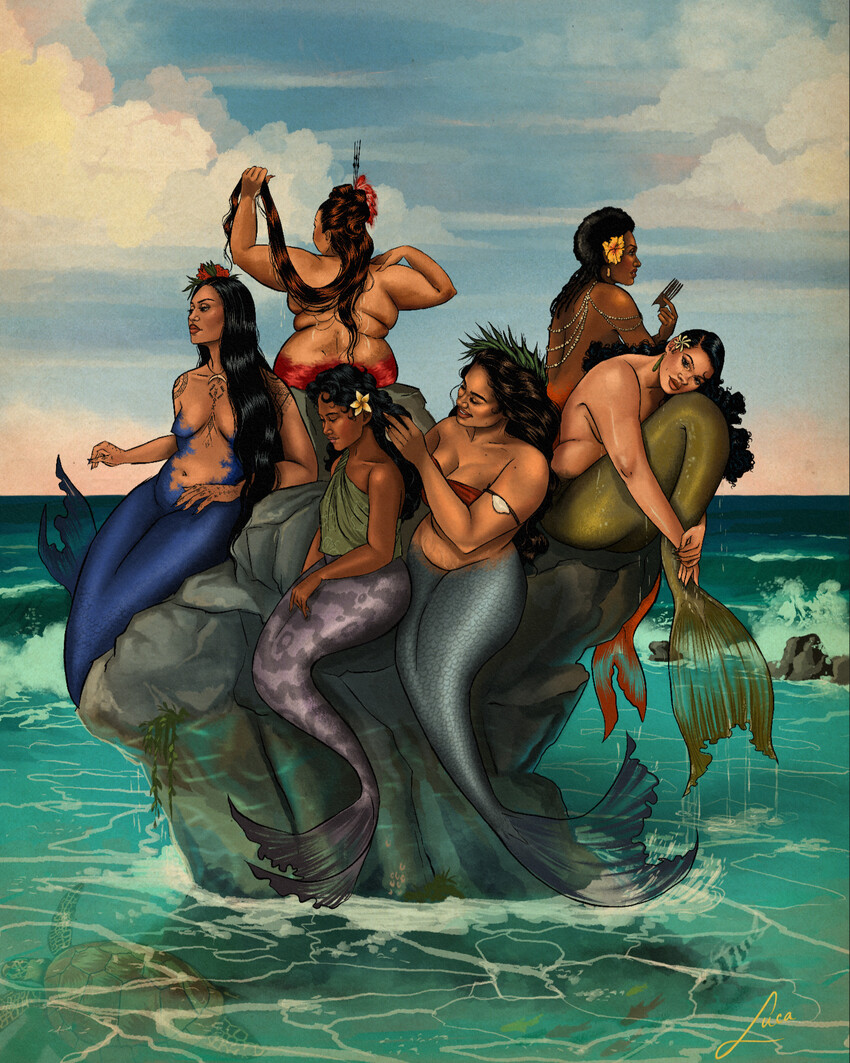
What struggles have you faced as a Tongan artist?
I do need to acknowledge my struggles are different and less harsh than my visibly Tongan counterparts, but for one, I really don’t want to benefit from tokenism or play into it in regard to opportunities which my Palangi-passing privilege has the ability to afford me. Looking the way I do, I feel I can often times feel deemed as a more comfortable diversity option. And that doesn’t sit right with me; I feel humoured and it is reductive to my work.
I’ve also unfortunately had people outright message me to question my background, which can be hard if it happens frequently. I’ll have to swallow my feelings sometimes in order to explain my life story to someone who might understandably be feeling doubtful about my “authenticity.”
While the trauma is valid, and brown bodies have been exploited long enough, if only guessing, reaching out with respect is always the best way forward and would be much appreciated, as I’m only trying to do my best :)
You make it a point to draw/paint us Polynesian women in all our natural, curvy beauty. Was that always a conscious choice for you as an artist?
At first, not really! It’s just what I’ve been used to and what I’ve seen around me growing up. Pasifika women have and always will be gorgeous, and that comes with the whole diverse package that can include the curves, the rolls, the stretch marks, the strength.
Now, though, I do really enjoy making conscious efforts and choices to highlight specific features that I see even on just one of my followers if that helps someone feel more seen. It really does feel like the least I could do, and it brings me happiness.
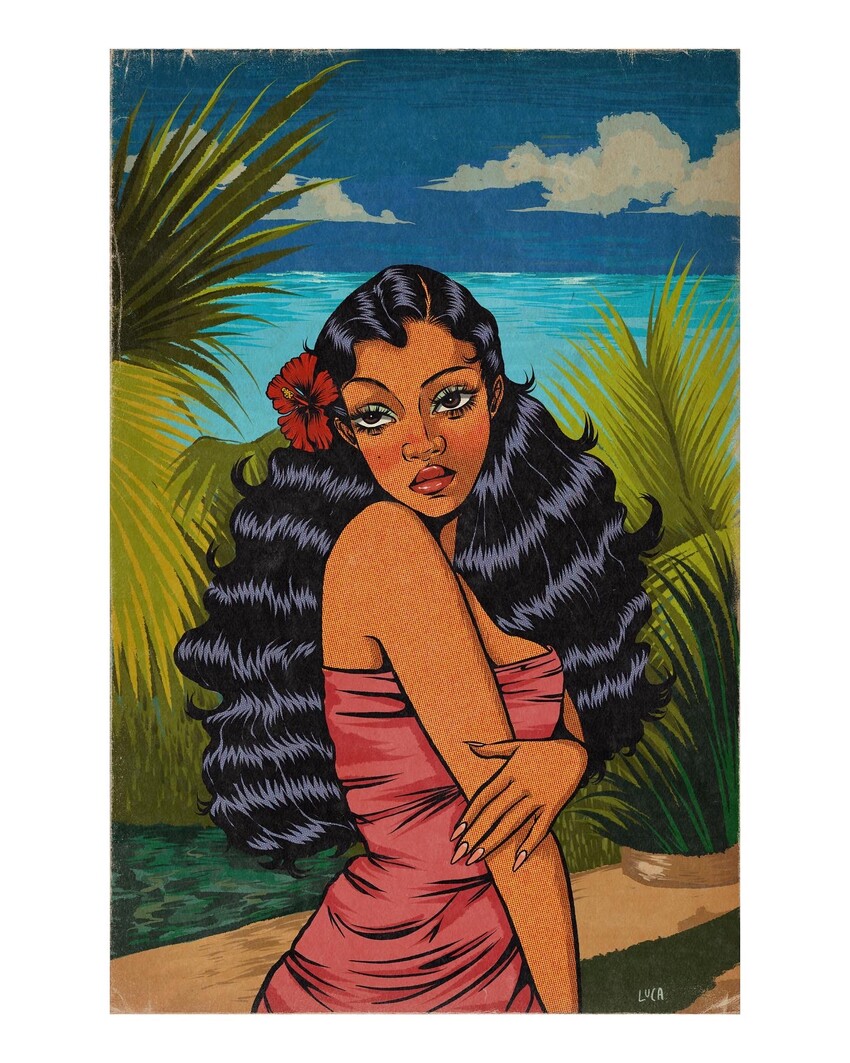
Why is it important for you to represent us so accurately in your art?
“Ko e Koloa 'a Tonga ko e Fakamālō,” or loosely, “The expression of gratitude is the treasure of Tonga.” My art, to me, is a way to express gratitude, and I can only do that by creating genuine and accurate visibility and representation, even if mixed with dreamlike elements.
It feels like something good I can bring to our world and serves as a love letter to all the influential women in my life. I’m not a particularly ambitious or driven person; I’m just someone who wants to make as many people feel good about themselves as I can.
As someone who struggles with low self-esteem frequently, I think showing people in this way how amazing they are directly influences how I feel about myself, a positive loop.
You've spoken openly about being a queer Tongan artist (how your Tongan mum still loved and accepted you when you came out). What was that like coming out to your Tongan mum?
To be honest, it wasn’t exactly straightforward at first. Being queer came as a shock to her, which came as a shock to me. We’ve always been so connected; I really thought she could read my mind, which I now understand to be an unfair expectation.
However, as the years have passed, it really isn’t a thing whatsoever, just a fact of life, and she loves me no less, perhaps even more.
If you’re a Pasifika mum reading this right now or a Pasifika LGBTQI+ kid wanting to come out to their parents, your relationship will only be fuller if you work hard at knowing each other wholeheartedly.
That doesn’t come without its challenges, but I prefer my challenges out in the open where I can see them, lol. As my mum today, she fully supports and uplifts my same-sex relationship and wants me to be happy, and I couldn’t ask for more.

What advice would you give other young brown artists aspiring to create art for a living?
While I don’t feel entitled to give advice on how young brown artists should navigate the art world, as a queer Tongan making art centering our Pacific people, balance being kind yet unapologetic, unwavering yet flexible, and don’t ever let anyone undervalue you, most importantly and especially yourself.
Love what you do, and genuinely treasure the people that enjoy and value it. There might also be people that will want to take advantage; you may be up against unfair agreements, tricky negotiations, and low pay, but you’ll navigate these issues better if you love what you do and you know your worth.
You’re amazing by already putting yourself further out there on this earth.
There’s a great wide community of us that are waiting for you to step into yourself and to support you. Reach out! It takes a village, and all this advice is stuff I’m only learning myself to do very recently.
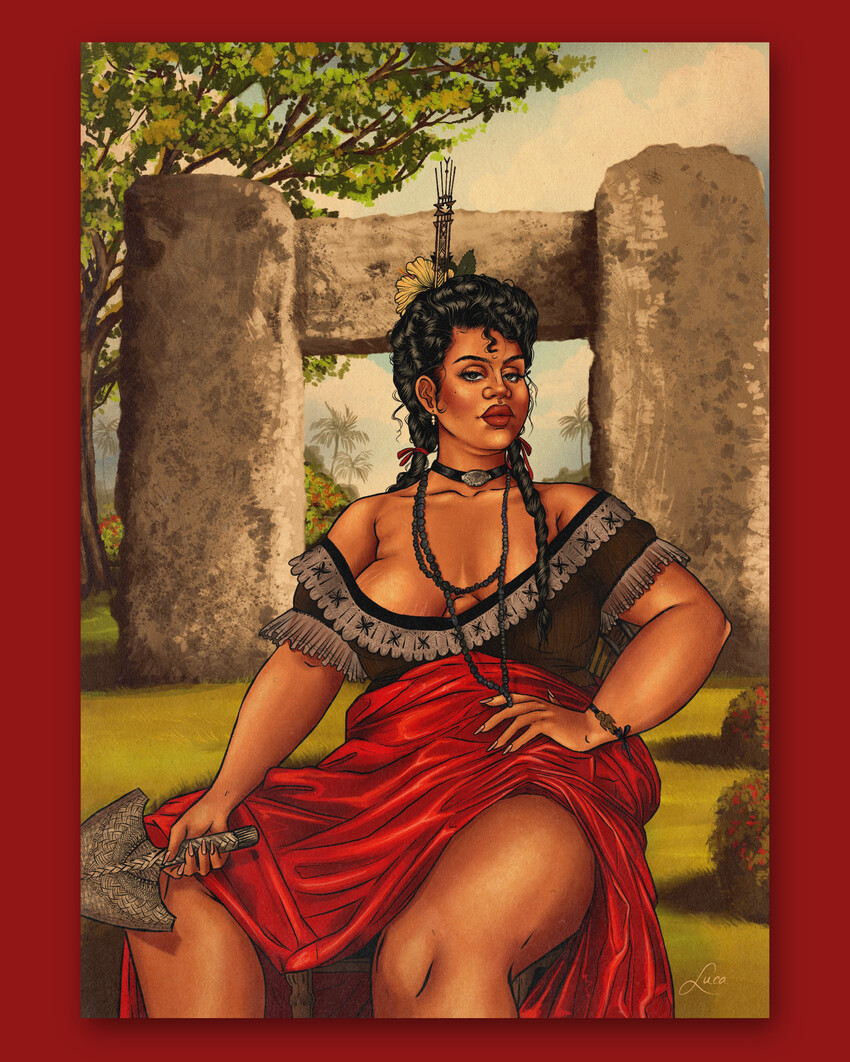
Who/what inspires you?
My mum and my family, my caring partner, and every single person that I’ve come across through my art journey on Instagram. There’s so many artists and amazing women I’ve had conversations with that I couldn’t list, but I wouldn’t and couldn’t do what I do without the support I’ve received from these special people in my life.
I pull so many aspects and inspiration and gratitude into my work from the feedback and the love they’ve shown me.
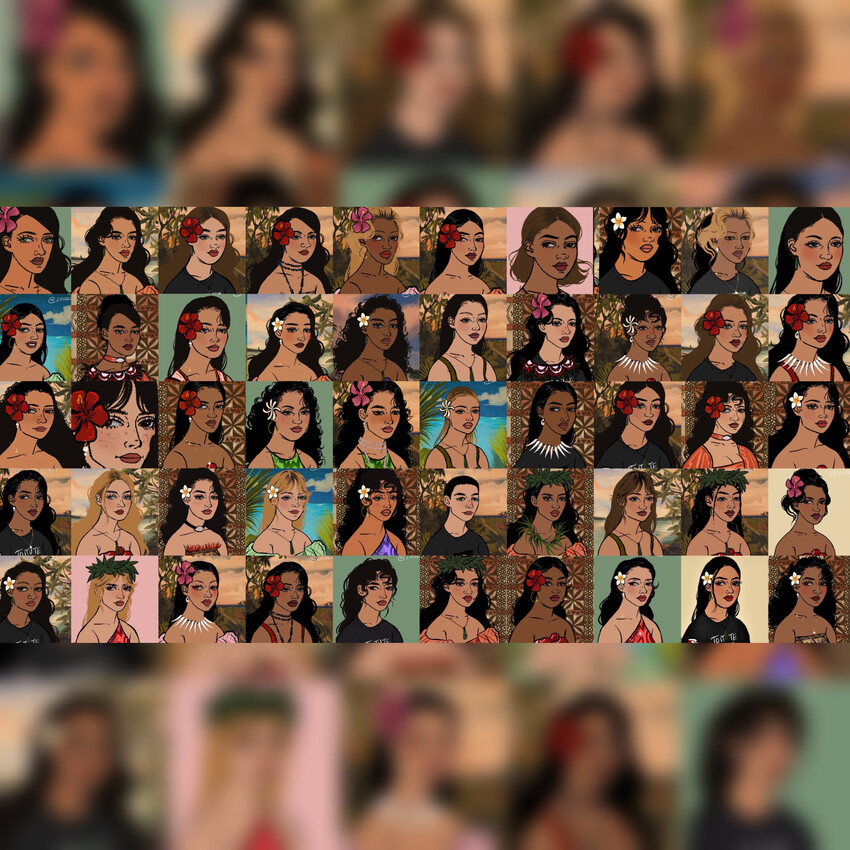
For those who don’t know, What is the avatar maker?
“Lucidluca’s avatar creator” is an online portrait maker inspired by dress up games of the early 2000’s with a Pasifika inclusive twist! Using over 160+ options of features and accessories hand drawn by me, users can create their own unique avatar in the style of my work!
What was the inspiration behind this?
I really wanted to explore different ways for people to interact with my art. So in line with my goal of creating more representation for pasifika women, I decided to create the avatar maker, to give people the ability to create something they feel represents them as accurately as possible! I loved online dress up games growing up, and always wanted a Tongan barbie, so this felt like the evolution of that.

What has it been like seeing all the beautiful Pasifika women use your avatar maker?
It was genuinely amazing, I had no idea that the reaction would be this incredible. It felt like a collective healing and play time. It was actually a very emotional and validating experience that I feel really proud of! Seeing all the beautiful Pasifika women take the time to have a play for sometimes hours, while also using it as a creative outlet was satisfying in so many ways!
-
Public Interest Journalism funded by NZ on Air
